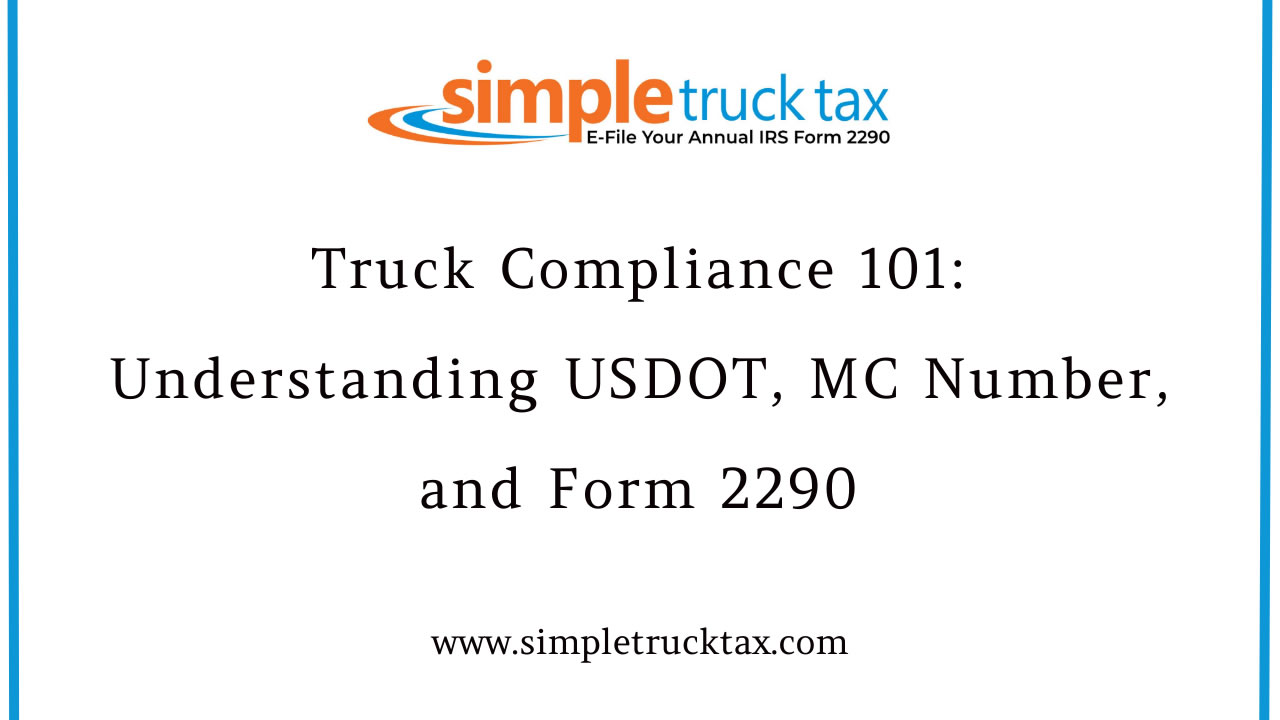
Truck Compliance 101: Understanding USDOT, MC Number, and Form 2290
Operating a commercial truck requires more than only driving; there are federal regulations that need to be complied with. Do not worry; as long as you follow rules there are no penalties and business runs smoothly. This guide aims to cover essentials such as USDOT numbers, MC numbers, and Form 2290 while explaining their significance and acquisition process.
Why you need a USDOT Number
USDOT or United States Department Of Transportation number is a specific nineteen digit code that identifies commercial vehicles in America. This code of compliance is critical in monitoring safety information, conducting audits of the vehicles, and tracking the Federation's authorized regulations.
Who needs a USDOT number
You will need a USDOT number if you:
- Use a vehicle with a gross vehicle weight rating (GVWR) of 10,001 pounds or more.
- Transport hazardous materials that require a placard.
- Use a commercial vehicle for transportation of Passengers or Cargo through Interstates.
How to apply for a USDOT Number
Acquiring a USDOT number is a simple process:
- Federal Motor Carrier Safety Association page.
- Complete USDOT registration within the Unified Registration System (URS).
- Get your USDOT number, and remember to showcase it on your vehicle.
What is MC number?
An MC (Motor Carrier) number is a registration under the FMCSA and it is needed by a carrier that does interstate commerce for hire. This number allows carriers to move certain regulated commodities from one state to another.
Do you need an MC number?
You are required to obtain an MC number if:
- You carry loads or passengers for a fee.
- Your entity services a business in a different state.
- You move regulated goods from one state to another.
How to apply for an MC Number
- Apply through the FMCSA Unified Registration System (URS).
- Submit the required filing payment.
- Wait for the operating authority approval, which may take a couple of weeks.
- Get the insurance coverage to meet MVRO requirements.
What is form 2290: Heavy vehicle use tax (HVUT)
Form 2290 is a tax form that needs to be filled by owners of registered trucks who wish to pay the Heavy Vehicle Use Tax (HVUT). This tax is applicable for vehicles that have a mass of 55,000 pounds and exceeding that and action helps streamline cash for the upkeep and growth of the highway and its structure.Who Requires To Fill Form 2290?
You are required to fill out Form 2290 if:
- You have a commercial vehicle weighing 55,000 pounds or more.
- The vehicle is used on the public highways.
- You work as an owner-operator or have a trucking business.
How To Submit Form 2290
- Estimate your tax liability depending on the weight and use of your vehicle.
- E-file or mail your submission to the IRS.
- Transfer HVUT tax payments through electronic funds, checks, or money orders.
- Get your stamped Schedule 1 that you need to support your proof of payment for tax and registration renewal.
Why Compliance Issues Are Important For Truckers
Not complying with the USDOT, MC number, or Form 2290 can result in penalties, fines, and the possibility of your operating authority being suspended. Compliance helps to guarantee:
- Legitimate operations of your trucking business.
- No interruptions when traveling from one state to another.
- Prevention of incurring penalties or fines.
Grasping USDOT numbers, MC numbers, and Form 2290 is crucial for the effective management of a trucking company. Properly adhering to the federal rules and regulations helps you avoid costly fines, stay within a reasonable safety rating, and ensure that business operations are running efficiently. If you are just starting out, you might want to talk with a trucking compliance specialist to help you get started on the legal side of things.